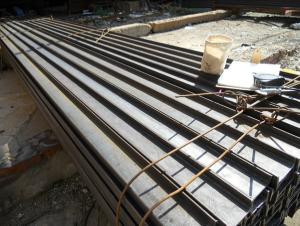Steel rebar, also known as reinforcement bars, is an essential component in the construction industry. These steel bars are used to reinforce concrete structures, providing strength and stability. But have you ever wondered about the size and weight of these seemingly simple bars? Let’s dive into the fascinating world of steel rebar and explore the various aspects that make it a vital part of our buildings and infrastructure.
The Significance of Size and Weight
Size and weight are crucial factors when it comes to steel rebar. They determine the structural integrity and the load-bearing capacity of the reinforced concrete. The size of the rebar is usually measured in diameter, and the weight is calculated based on the volume and the density of steel, which is approximately 7850 kg/m³.
Common Sizes and Weights
Rebar comes in a variety of sizes, ranging from 6mm to 40mm in diameter. The most common sizes used in construction are 12mm, 16mm, 20mm, and 25mm. The weight of a single meter of rebar can be calculated using the formula: weight = (π (diameter/2)²) length density. For example, a 12mm rebar weighs approximately 0.888 kg per meter, while a 25mm rebar weighs around 2.46 kg per meter.
Factors Affecting Size and Weight Selection
Several factors influence the choice of rebar size and weight, including the design requirements of the structure, the load it needs to support, and the spacing required for proper concrete cover and bonding. Engineers and architects carefully consider these factors to ensure the safety and durability of the structure.
Installation and Handling
Proper installation and handling of rebar are essential to avoid damage and ensure its effectiveness. Rebar should be handled with care to prevent bending or deformation. It’s also important to maintain the correct spacing between bars to allow for proper concrete flow and curing.
The Role of Rebar in Different Structures
Rebar plays a vital role in various types of structures, from residential buildings to bridges and dams. In residential construction, rebar is used for columns, beams, and slabs. In commercial construction, it’s used for larger structures with heavier loads, such as high-rise buildings and shopping centers.
The Future of Steel Rebar
As the construction industry evolves, so does the use of steel rebar. Innovations in material science and engineering are leading to the development of new types of rebar with improved properties, such as higher strength and better corrosion resistance. These advancements will continue to shape the way we design and build our structures.
Conclusion
Understanding the size and weight of steel rebar is crucial for builders and construction professionals. It’s not just about choosing the right size and weight; it’s about ensuring the safety, durability, and longevity of the structures we build. So, the next time you walk past a construction site, take a moment to appreciate the unsung hero of the construction world – the steel rebar.

